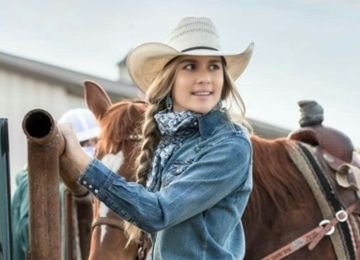Spanish Barb Horse: Legendary Origins of an Equine Icon
The Spanish Barb Horse is a breed that carries the weight of centuries on its elegant frame. Revered for its strength, agility, and historical significance, this breed has shaped the equestrian landscape of multiple continents. From its beginnings in North Africa to its influence on American horse breeds, the Spanish Barb’s legacy is as enduring as its spirit.
Also, Check Out: How Does a Horse See the World
Table of Contents
A Journey Across Continents and Time
The origins of Spanish Barb horses trace back to the Barbary Coast of North Africa around 700 AD. Known for their resilience, these horses were essential to the Zenata, a warrior tribe of Berbers. In 711 AD, the Zenata allied with the Moors to invade the Iberian Peninsula, bringing their prized Barbs with them. The Moors called their new territory Al-Andalus, which spanned modern-day Spain and parts of Portugal and France.
In Al-Andalus, the Barbs were crossed with local Spanish warhorses, producing a versatile breed that excelled in cavalry, cattle work, and transportation. This new lineage became coveted throughout medieval Europe and played a pivotal role in royal stud farms. Over time, Spanish Barb horses would sail across the Atlantic, embarking on a journey that would forever alter the history of horses in the Americas.
The Spanish Barb in the New World
During the 16th century, Spanish explorers and settlers introduced Spanish Barb horses to the Americas. These horses, vital for colonization, thrived in diverse terrains, from the Caribbean to the American Southwest. Indigenous peoples, such as the Chickasaw, Choctaw, and Creeks, embraced the breed, incorporating it into their cultures and livelihoods. The Spanish Barb’s adaptability and endurance made it an invaluable asset, influencing American horse breeds like the Quarter Horse, Paint, and Appaloosa.
A Close Brush with Extinction
Despite its historical significance, the Spanish Barb Horse faced near extinction in the 19th century. Overzealous crossbreeding, U.S. government policies, and shifting equestrian preferences dwindled pure bloodlines. By the 20th century, only a handful of ranchers and breeders recognized the breed’s importance. Thanks to their efforts, a strict breeding program was established to preserve this invaluable horse.
Today, fewer than 2,000 purebred Spanish Barb horses exist, but their impact resonates across equestrian disciplines, from dressage to mounted shooting.
Unmistakable Traits of the Spanish Barb Horse
The Spanish Barb stands out not only for its history but also for its distinct physical and behavioral traits:
- Appearance: These horses have a lean, refined head, with expressive brown or blue eyes and crescent-shaped nostrils. Their sturdy legs and short backs make them ideal for agility and strength.
- Colors: They come in various colors, including buckskin, palomino, and paint patterns like Medicine Hats.
- Disposition: Spanish Barb horses are prized for their intelligence, calm temperament, and athletic prowess.
Spanish Barb Horses Today
Modern preservation efforts highlight the importance of maintaining this breed’s purity. Key bloodlines, such as the Wilbur-Cruce Mission Strain, are vital to its conservation. These efforts ensure that the Spanish Barb remains a living testament to its rich heritage, from the Barbary Coast to the ranches of the United States.
Fun Facts: Spanish Names for Horses
Are you naming your Spanish Barb Horse? Consider these Spanish-inspired names that reflect their heritage:
- Brisa (Breeze)
- Luna (Moon)
- Sombra (Shadow)
- Fuego (Fire)
- Rio (River)
These names pay homage to the breed’s Spanish and Moorish lineage while celebrating its enduring spirit.
Why the Spanish Barb is a Treasure
The Spanish Barb Horse is more than just a breed; it’s a symbol of endurance, adaptability, and history. From its role in the Moorish conquest of Spain to its influence on North American breeds, its legacy is unparalleled. As conservation efforts continue, we can honor this remarkable horse by preserving its story and safeguarding its future.









